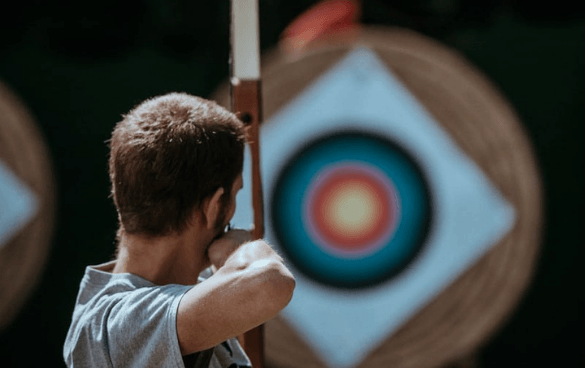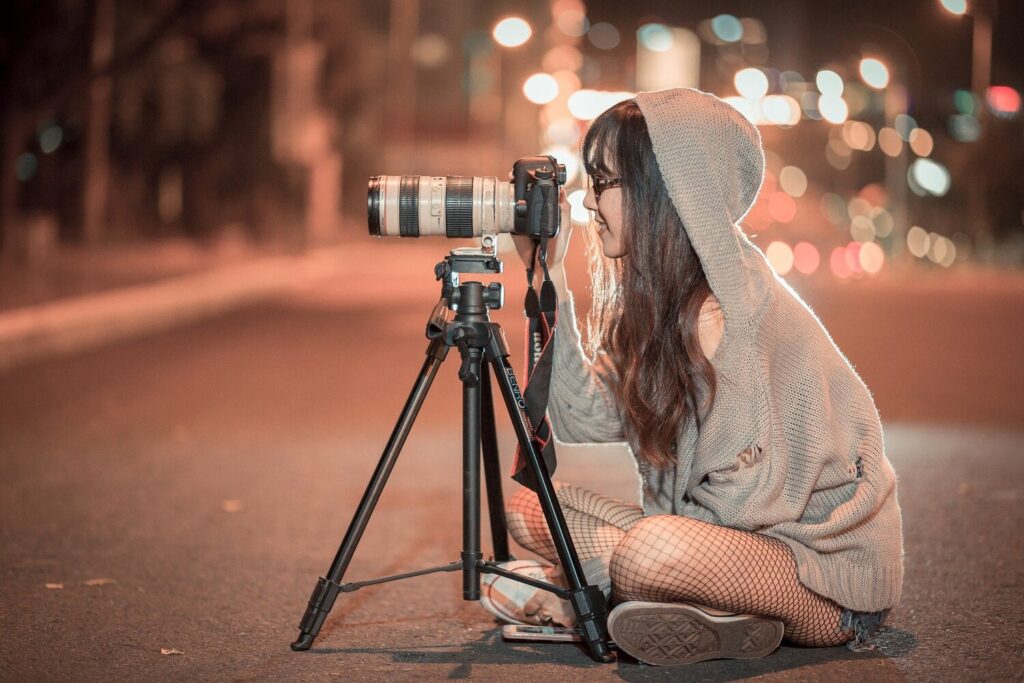Maximize your campaign shooting by planning meticulously and ensuring clear communication with your team. Use high-quality equipment and optimal lighting.
Successful campaign shooting requires strategic planning and attention to detail. Start by clearly defining your goals and target audience. Create a detailed shot list and storyboard to ensure you capture all necessary scenes. Collaborate closely with your team, including photographers, videographers, and directors, to align on the creative vision.
Quality equipment and proper lighting are crucial for achieving professional results. Test your setup before the shoot to avoid technical issues. Schedule your shoot efficiently to make the most of your time and resources. By following these steps, you can ensure your campaign shooting is effective and impactful.
Preparation Strategies
Getting the most out of your campaign shooting starts with thorough preparation. Proper planning ensures smooth execution and maximizes the quality of your content. In this section, we’ll discuss key preparation strategies to help you achieve exceptional results.
Research Locations
Choosing the right location is crucial for your campaign’s success. Researching locations involves several steps:
- Identify potential locations: List places that match your campaign theme.
- Visit locations: Check lighting, accessibility, and permissions.
- Consider logistics: Ensure the location is convenient for your team and equipment.
Use online tools and local contacts to gather information. Google Maps and social media can provide valuable insights. Always have a backup location in case the primary one is unavailable.
Create A Shot List
A detailed shot list is essential for organized and efficient shooting. Here’s how to create one:
- Outline campaign goals: Understand the objectives of your campaign.
- List required shots: Include all necessary angles, scenes, and compositions.
- Prioritize shots: Arrange shots based on importance and sequence.
Here’s an example of a simple shot list:
| Shot Number | Description | Location | Time of Day |
|---|---|---|---|
| 1 | Close-up of product | Studio | Morning |
| 2 | Model using product | Park | Afternoon |
A well-prepared shot list saves time and ensures no critical shots are missed. Collaborate with your team to refine and finalize the list.

Credit: ccp.jhu.edu
Equipment Essentials
Getting the most out of your campaign shooting starts with the right equipment. Ensuring you have the necessary tools can make or break your shoot. Below, we’ll dive into the essential gear you need.
Camera Gear
Your camera is the heart of your shoot. Choose one that suits your needs.
- DSLR Cameras: Great for high-quality images and flexibility.
- Mirrorless Cameras: Lightweight and offer excellent video capabilities.
- Lenses: Invest in a variety of lenses, like prime and zoom lenses.
- Tripods: Essential for stable shots, especially in low light.
- Memory Cards: High-capacity cards ensure you don’t run out of space.
Lighting Tools
Lighting is crucial for capturing the perfect shot. Proper lighting enhances your images.
- Softboxes: Provide soft, diffused light, reducing harsh shadows.
- Ring Lights: Ideal for even lighting, perfect for portraits.
- LED Panels: Versatile and adjustable, great for various lighting needs.
- Reflectors: Bounce natural light to fill in shadows.
- Light Stands: Keep your lights steady and at the right height.
Equip yourself with these essentials for a successful campaign shoot.
Team Coordination
Effective team coordination is key to a successful campaign shooting. It ensures everyone is on the same page and works towards a common goal. Here are some tips to help you get the most out of your campaign shooting through proper team coordination.
Assign Roles
Assigning clear roles is crucial for a smooth campaign shoot. Each team member should know their specific duties and responsibilities.
- Director: Oversees the entire shoot, ensuring the vision is met.
- Camera Operator: Manages the camera and captures the shots.
- Lighting Technician: Sets up and controls lighting to create the desired effect.
- Makeup Artist: Prepares the talent for the shoot with appropriate makeup.
- Production Assistant: Helps with various tasks to support the team.
Communication Tips
Good communication is the backbone of a well-coordinated team. Here are some tips to improve communication:
- Pre-Shoot Meetings: Hold meetings to discuss the shoot details and assign tasks.
- Clear Instructions: Give clear and concise instructions to avoid confusion.
- Regular Check-Ins: Have regular check-ins to ensure everyone is on track.
- Feedback Loop: Create a feedback loop to address any issues promptly.
Use these tips to enhance your team’s coordination and make your campaign shooting a success.

Credit: www.webfx.com
Capturing The Perfect Shot
Capturing the perfect shot is key to a successful campaign. It involves understanding framing techniques and using natural light effectively. Here are some tips to help you achieve that.
Framing Techniques
Framing is about composing your shot. Use these tips:
- Rule of Thirds: Divide your frame into nine equal parts. Place important elements along the lines or at the intersections.
- Leading Lines: Use natural lines to lead the viewer’s eye to the subject.
- Symmetry: Create a balanced shot with equal visual weight on both sides.
- Depth: Use foreground, middle ground, and background to add depth to your image.
Use Of Natural Light
Natural light can make your photos look amazing. Here’s how to use it:
- Golden Hour: Shoot during the first hour after sunrise and the last hour before sunset.
- Soft Light: Overcast days provide soft light, reducing harsh shadows.
- Backlighting: Place the light source behind your subject for a glowing effect.
- Diffused Light: Use a reflector or a white sheet to diffuse direct sunlight.
Post-production Tips
Post-production is the stage where your campaign shooting truly comes to life. It involves refining your raw footage, enhancing its quality, and adding creative touches. Mastering post-production can significantly elevate the impact of your campaign. Below, we will explore some essential tips, focusing on Editing Software and Color Correction.
Editing Software
Choosing the right editing software is crucial for efficient post-production. Popular options include Adobe Premiere Pro, Final Cut Pro, and DaVinci Resolve. Each has unique features that can benefit your project.
- Adobe Premiere Pro: Known for its versatility and user-friendly interface.
- Final Cut Pro: Ideal for Mac users, offering seamless integration with other Apple products.
- DaVinci Resolve: Excellent for color correction and grading, with a powerful free version.
Using these tools, you can trim, cut, and merge clips to create a cohesive narrative. Make sure to use keyboard shortcuts to save time. Organize your media files in folders for easy access.
Color Correction
Color correction ensures your footage looks consistent and professional. It’s essential for maintaining visual continuity. Start by adjusting the white balance to ensure colors are true to life.
- Use scopes like the waveform and vectorscope to analyze color data.
- Adjust exposure and contrast to enhance details.
- Match the color tone across all clips for consistency.
Consider using LUTs (Look-Up Tables) to apply a specific color grade. They can give your campaign a unique look and feel. Always check your work on different monitors to ensure color accuracy.
| Software | Best For |
|---|---|
| Adobe Premiere Pro | Versatility |
| Final Cut Pro | Mac Users |
| DaVinci Resolve | Color Correction |
Maximizing Social Media Impact
Social media can boost your campaign shooting results. Sharing content on social platforms helps reach a larger audience. Let’s explore how to maximize this impact.
Optimal Posting Times
Timing plays a crucial role in social media success. Posting at the right time ensures your content is seen by more people.
Research shows that different platforms have peak times. Below is a table with optimal posting times for major platforms:
| Platform | Best Times to Post |
|---|---|
| Wednesday, 11 AM – 1 PM | |
| Wednesday, 10 AM – 12 PM | |
| Tuesday, 9 AM – 11 AM | |
| Wednesday, 8 AM – 10 AM |
Analyzing your audience’s activity can provide better insights. Use social media tools to find the best posting times.
Engaging Captions
Captions play a significant role in attracting attention. They should be short, catchy, and relevant.
Here are some tips for creating engaging captions:
- Keep it short: Aim for 125 characters or less.
- Use emojis: They add personality and make the caption fun.
- Ask questions: Engage your audience by asking simple questions.
- Include a call-to-action: Encourage followers to like, comment, or share.
Below is an example of an engaging caption:
"🌟 Just wrapped up an amazing campaign shoot! What's your favorite shot? 📸 #BehindTheScenes #CampaignShoot"
Remember to use hashtags to increase visibility. Hashtags help your content reach a broader audience.
Budget Management
Effective budget management can make or break your campaign shooting. By keeping your expenses under control, you ensure a smooth production process. Here are some key strategies to get the most out of your campaign shooting budget.
Cost-effective Solutions
Finding cost-effective solutions is crucial for your campaign shooting. Use the following tips to manage your budget efficiently:
- Rent equipment instead of buying.
- Opt for local locations to save travel costs.
- Utilize free resources like public domains for background music.
- Hire multi-skilled crew members to reduce staffing costs.
Tracking Expenses
Keeping a close eye on your expenses is vital. Here are some methods to help you track them:
- Use a spreadsheet to log every expense.
- Set alerts for budget thresholds.
- Regularly review your expenditure.
- Adjust your budget as necessary based on spending trends.
Below is an example of a simple expense tracking table:
| Item | Estimated Cost | Actual Cost | Difference |
|---|---|---|---|
| Camera Rental | $500 | $450 | $50 |
| Location Fees | $300 | $320 | -$20 |
| Props | $150 | $140 | $10 |
Budget management helps you avoid overspending. It also ensures you get the most out of your campaign shooting.
Learning From Feedback
Learning from Feedback is essential to get the most out of your campaign shooting. Feedback helps you understand what works and what doesn’t. You can make improvements based on real experiences. Let’s explore how to use feedback effectively.
Client Reviews
Client reviews are your best friend. They tell you what clients think. Positive reviews show what you did right. Negative reviews point out areas to improve. Always read client reviews carefully.
| Feedback Type | Action |
|---|---|
| Positive | Continue using the same techniques |
| Negative | Identify issues and find solutions |
Continuous Improvement
Always aim for continuous improvement. Feedback helps you grow. Create a list of common feedback points. Address these points one by one. Keep track of your progress.
- Read feedback regularly.
- Update your techniques.
- Track improvements.
- Ask for more feedback.
Remember, every piece of feedback is a chance to improve. Use it wisely and keep getting better.

Credit: gametee.co.uk
Frequently Asked Questions
How Do I Prepare For A Campaign Shoot?
Preparing for a campaign shoot involves planning your shots, scouting locations, and organizing your gear. Make a shot list and schedule. Ensure all equipment is charged and ready. Communicate with your team about the vision and goals.
What Equipment Is Essential For A Campaign Shoot?
Essential equipment for a campaign shoot includes a camera, lenses, tripod, lighting, and backup batteries. Also, bring memory cards and a laptop for backups. Ensure you have all necessary accessories like filters and cleaning kits.
How Can I Optimize Lighting In Campaign Shoots?
Optimize lighting by using natural light, reflectors, and additional lights. Experiment with different angles. Adjust your settings to balance exposure. Consider the time of day for optimal lighting conditions.
What Are The Best Practices For Shooting On Location?
Best practices include scouting the location beforehand, getting necessary permits, and understanding local regulations. Bring extra gear for unforeseen issues. Communicate with your team and respect the environment.
Conclusion
Mastering campaign shooting takes practice and attention to detail. Use these tips to optimize your efforts and boost results. Always plan thoroughly, select the right equipment, and remain adaptable. Consistent evaluation and adjustments will ensure your campaigns remain effective. Start applying these strategies today for better performance and successful outcomes.

